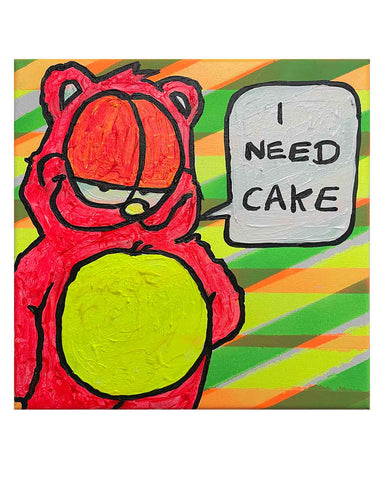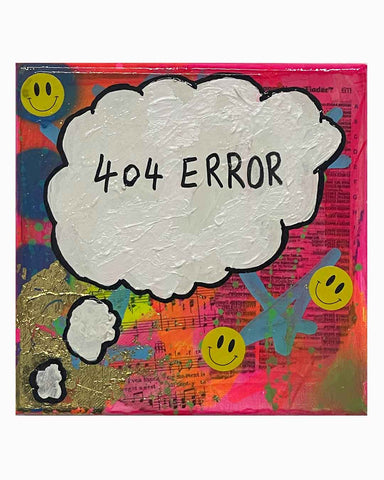Expert Tips for Buying Small Art. Impact is not always determined by size in the realm of art. Sometimes, people undervalue the significance of an artwork's dimensions. It's not only a question of space; it's also a question of desired effect and impact. It's the tiny paintings that actually have an impact, even as larger ones can change an entire space, infuse energy, or even establish a mood. Smaller pieces are really more adaptable because they can stand alone or be hung together. When you want to rehang your artwork to create a different atmosphere, they are readily rearranged. Small artworks are a sought-after addition to any collection since they may hold such much beauty, charm, and significance.
Define Your Style
Give your collection's concept and your own personal preferences some thought before you buy any little artwork. The fact that art has always existed throughout human history indicates that there is more to art and humanity than just subjective aesthetic preferences. Numerous societal advantages result from an understanding of the psychological factors that influence art tastes. Understanding which artistic mediums appeal to particular personality types, for example, can help promote art in local communities, motivate individual students, and satisfy a range of consumer tastes. In a similar vein, recognising shared tastes in art can facilitate the development of inclusive spaces that appeal to a wider range of people. Your individual style is a special synthesis of artistic genres that captures your interests, personality, and way of life. You will have a dominant art category, even though your style may draw inspiration from several different fashion categories.
Research Artists and Styles
To increase your understanding and appreciation of many styles and approaches, investigate numerous artists and art movements. In the domain of art, "style" refers to the way that the execution is seen in the finished piece. It includes components that are frequently separate from the subject matter but entwined with it, including line, colour, shape, texture, proportion, and rhythm. Artists, civilizations, historical eras, and nations all have different styles. The process of classifying artworks by style entails determining unique characteristics that link them to a specific group or time period. Connoisseurs can still identify works by using style principles to assign them to specific artists, historical periods, or creative groups, even if an artist's work may change over time and there are many different artistic trends. Finding commonalities across an artist's works is necessary to identify the style of a painting. Style aspects may not sufficiently convey the visual experience through verbalization, which presents difficulties for experimenters who rely solely on verbal replies. Understanding concept acquisition entails being able to detect examples of a style notion that are both positive and bad, even in the absence of a clear creator identity. Experiments demonstrating that people, including artistically ignorant college students, can learn to allocate artworks to artists based on style prove that style judgement is a learnt behaviour. Learning about style concepts is aided by exposure to artists' creations and spoken explanations of style characteristics. See art shows, galleries, and internet sites to find up-and-coming artists and well-established artists whose creations speak to you.
Quality and Craftsmanship
Quality counts, even in small art. Machine learning is being used more and more in the creation and protection of safe and private mobile applications, as well as in the creation of crafts and artwork that are frequently made by amateurs to satisfy the needs of the general public. These works of art preserve national cultural customs and capture the spirit of traditional culture. Materials used in arts and crafts emphasise the balance between practicality and beauty, as well as practicality and functionality in design. Arts & crafts are usually dominated by aesthetic appeal, which highlights cognitive and educational aspects. For example, they assist us in appreciating the essence of life and our homeland, as well as the beauty of many eras and nations. From the Palaeolithic Era to the present, human creativity and knowledge have shaped the evolution of the material and spiritual sides of existence, with produced artefacts playing a crucial role in maintaining human survival and societal advancement.
Authenticity and Provenance
Because the art market places so much attention on provenance traditions, it is common to forget the gap between the concepts of legal ownership and physical possession. The entire history of an artwork's locations from the time of the artist's creation to the present is referred to as its provenance. The related concept of provenience, as it relates to antiquity objects, refers to the place where the object was originally found. The main foundation of provenance is actual possession or place; ownership or legal title are not always synonymous with these concepts. On the other hand, details about an artwork's past locations and owners can shed light on its legal title. Even with a catalogue raisonné that is extremely comprehensive, parties may continue to challenge or raise issues long after it has been published, casting doubt on the accuracy of the information contained in it.
Experiment
When searching for small art for your wall, don’t be afraid to think beyond the box. Textiles can be a cost-effective option. Printed silk handkerchiefs look stylish when placed in a straightforward glass frame, and a huge wall hanging looks impactful when hung alone on a blank wall. But before you buy, make sure to measure your room and check the measurements of any item you're thinking about purchasing. When it comes to determining whether a print is the appropriate size for your space and mocking up its size, masking tape is an indispensable tool.
Trust Your Instincts
Buying small art is a personal experience driven by feelings and intuition. A little artwork that makes you happy and resonates with you on an emotional level is perhaps something you should add to your collection. Individual preferences for paintings transcending time periods and stylistic variants are more significant than stylistic variances. Furthermore, openness and aesthetic attitudes, interests, and preferences are continuously correlated, and age continues to influence preferences overall and for particular styles even after adjusting for other variables. Have faith in your instincts and let yourself be pulled to items that speak to your spirit. Psychological dispositions and age—especially openness—have an impact on art preferences. This suggests that knowing someone's age and personality can help predict their interest in and appreciation of visual art.
Please get in contact regarding more information about my fun artwork.






